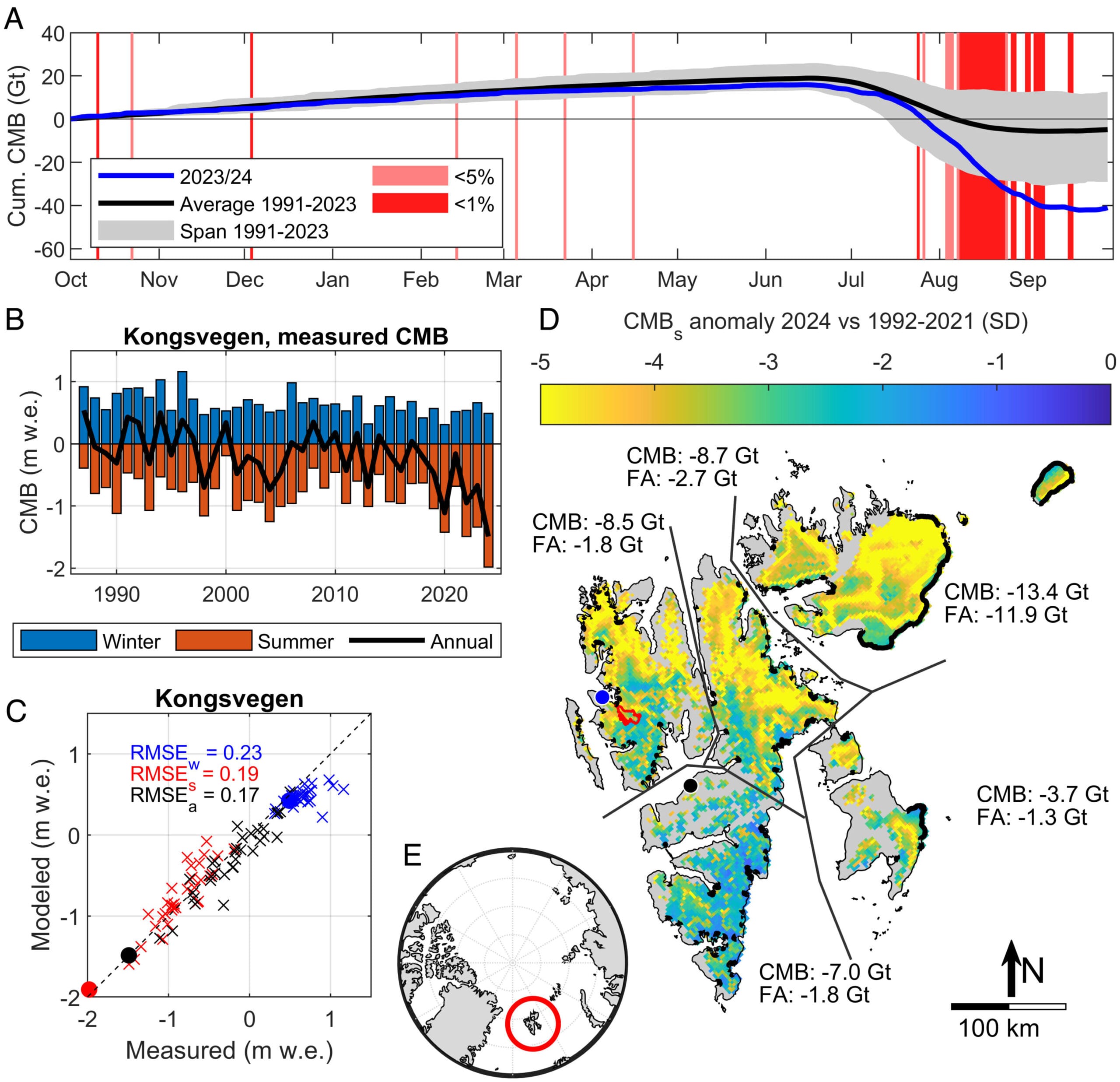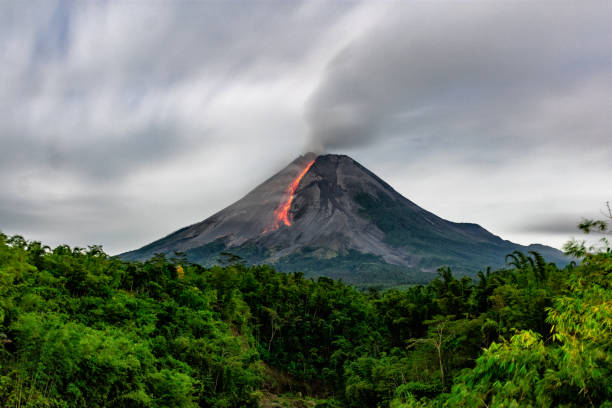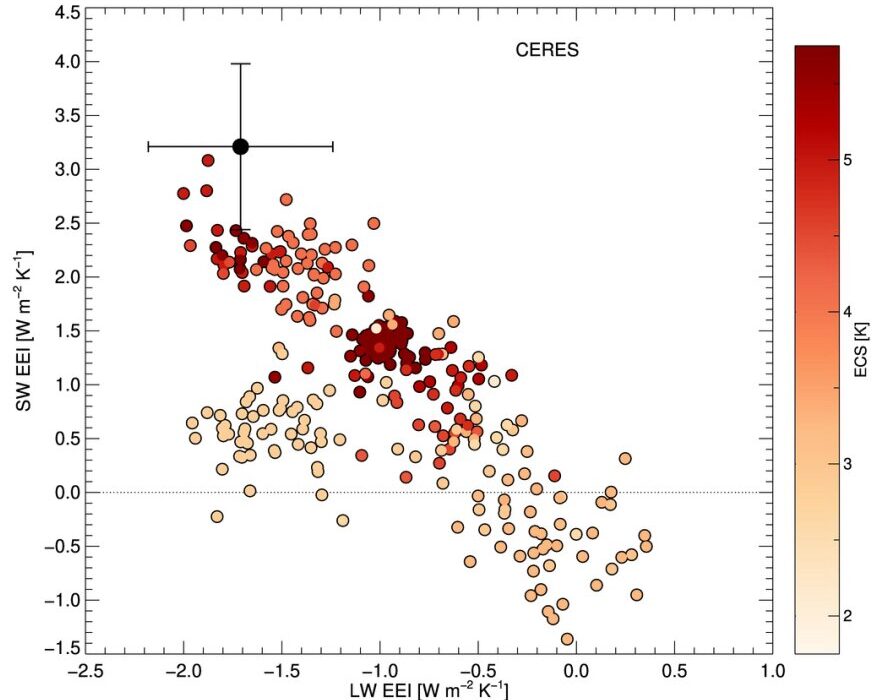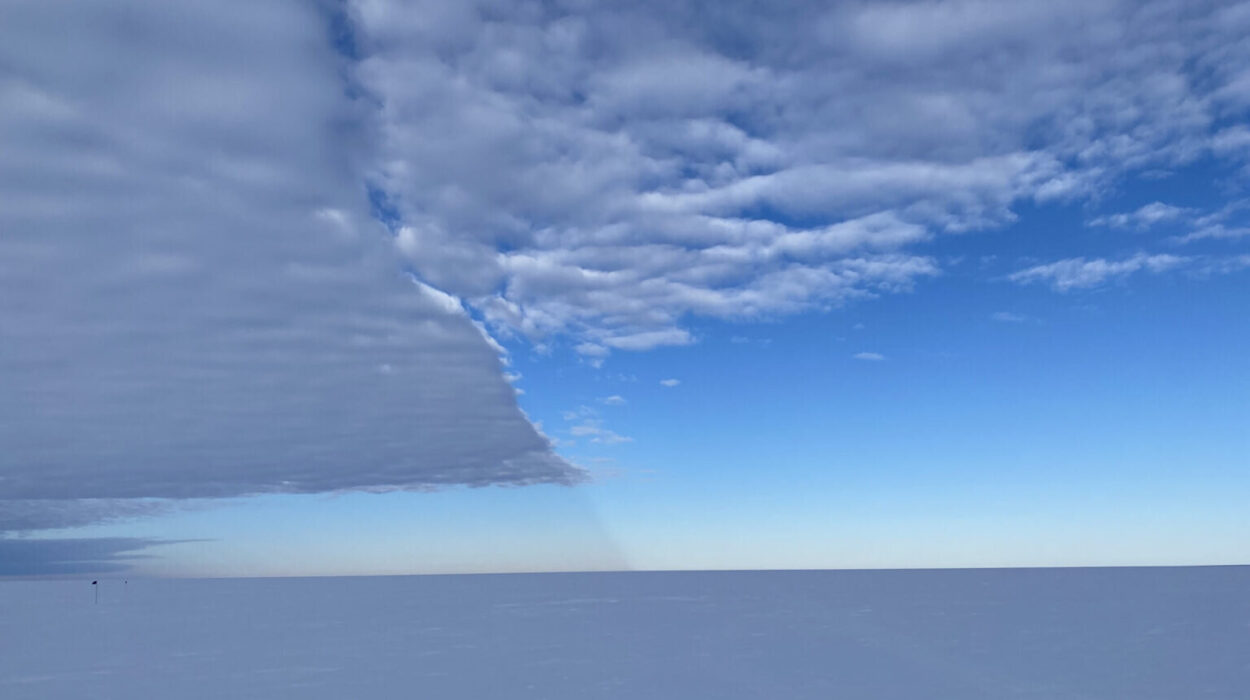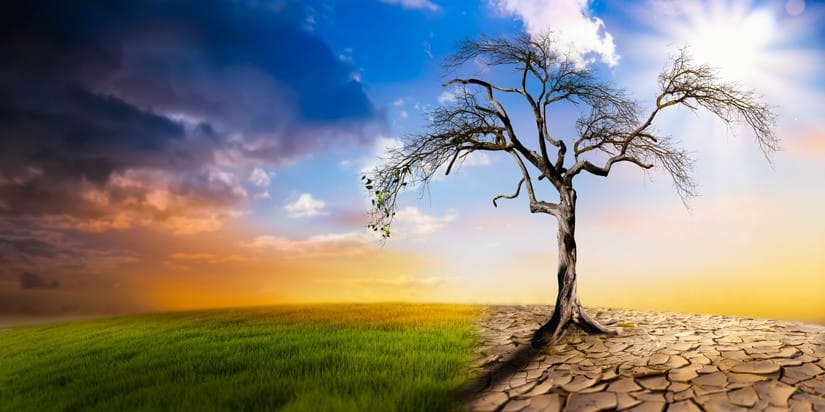Far to the north, where the Arctic Ocean meets the sky, lies Svalbard—an archipelago of frozen mountains, sweeping fjords, and glaciers that seem eternal. For centuries, this icy wilderness has stood as one of the last untouched frontiers of the Earth, a place where polar bears roam, and human presence remains minimal. But Svalbard is changing, and what happens here is more than a local concern. It is a message to the world.
Today, about 60% of Svalbard’s surface is covered in glaciers. They shape its landscape, feed its rivers, and define its ecosystems. Yet these frozen giants are retreating, melting at a pace that shocks even the scientists who have devoted their lives to studying them. In the summer of 2024, Svalbard experienced something unprecedented—a six-week heat wave that melted more of its ice than any summer in recorded history.
The Summer That Changed Everything
The summer of 2024 was no ordinary Arctic season. Instead of the usual brief stretch of mild weather, Svalbard was scorched by relentless heat. Temperatures climbed far above what the region typically experiences, and the glaciers responded with dramatic speed. Streams of meltwater gushed across their surfaces, ice cliffs fractured, and vast chunks of ice tumbled into the sea.
Researchers led by Thomas Vikhamar Schuler from the University of Oslo set out to understand just how much ice had been lost during this extraordinary summer. Their study, later published in the Proceedings of the National Academy of Sciences, revealed a sobering truth: Svalbard lost around 1% of its entire ice mass in just a few weeks. That amounts to 61.7 ± 11.1 gigatons of ice—a staggering figure for such a small archipelago.
To put this in perspective, Svalbard is about 50 times smaller than Greenland, yet its 2024 ice loss was on par with Greenland’s own summer melt of 55 ± 35 gigatons. This wasn’t supposed to happen yet. Even the most advanced climate models had predicted losses of this scale only decades into the future.
How the Melting Was Measured
To uncover these results, Schuler and his team relied on a combination of cutting-edge tools. On the ground, they used aluminum poles drilled into the ice to track surface melt—simple markers that reveal how quickly the ice is thinning. From above, satellites scanned the glaciers, measuring their changing surfaces with precision. And in the digital realm, the researchers turned to the CryoGrid model, a powerful climate simulation system that reconstructs and predicts ice dynamics.
They examined two processes of ice loss. The first was surface melt, where rising air temperatures directly melt the glacier’s top layers. The second was calving, in which chunks of ice at marine glacier fronts break away and plunge into the sea. Together, these processes stripped away ice on a scale that astonished even seasoned glaciologists.
A Region Losing Ice at Unprecedented Scale
The 2024 melt was not confined to Svalbard alone. The surrounding circum-Barents region—which includes Franz Josef Land and Novaya Zemlya—also experienced devastating losses. In total, the region shed 102.1 ± 22.9 gigatons of ice that year.
That translated to about 0.27 ± 0.06 millimeters of global sea-level rise in a single summer. At first glance, such a number may seem tiny, but it represents an outsized contribution when placed in context. The study notes that this single season’s contribution equaled half of the sea-level rise caused by all Arctic glaciers during the entire decade from 2006 to 2015. In one summer, the circum-Barents became one of the strongest contributors to global sea-level rise on Earth.
Why It Matters Beyond the Arctic
It can be tempting to think of Svalbard’s glaciers as remote and irrelevant to daily life elsewhere. But their melting has profound global consequences. Every drop of water that runs off its glaciers or calves into the sea adds to the oceans that lap at the shores of New York, Dhaka, and Tokyo. Sea-level rise threatens millions of people worldwide, reshaping coastlines, swallowing farmland, and amplifying storm surges.
The melting of Arctic glaciers also disrupts ocean circulation, a system that regulates global climate. Freshwater pouring into the sea changes salinity levels, potentially weakening ocean currents that move heat around the planet. And for the Arctic itself, the loss of glaciers means collapsing ecosystems, where species like polar bears and seals struggle to survive in an environment that is transforming faster than they can adapt.
A Glimpse of the Future
Perhaps the most unsettling finding of Schuler’s team is not just what happened in 2024—but what it signals for the future. Their climate modeling suggests that summers like 2024, once thought of as “extreme,” will become commonplace by the end of the century. Even if humanity manages to reduce greenhouse gas emissions under optimistic scenarios, these hot Arctic summers are expected to return again and again, growing even more intense.
“Our study shows that 2024 summer temperatures will be frequently reached in just a few decades and exceeded toward the end of the 21st century,” the authors wrote. What happened in Svalbard was not a freak event. It was a preview—a window into the world we are creating.
The Human Dimension
While glaciers seem distant, their fate is deeply tied to human choices. Communities in the Arctic, including the small towns of Svalbard, already see the changes firsthand. Infrastructure built on permafrost is destabilizing. Traditional hunting routes are altered as sea ice vanishes. And the cultural and emotional connection between people and the frozen landscapes that have defined their existence for centuries is eroding.
On a global level, billions of people who may never visit the Arctic will nonetheless feel its pulse. Farmers, fishers, city dwellers, and coastal communities alike are tethered to these faraway glaciers through climate systems and rising seas.
A Call to Listen to the Ice
The glaciers of Svalbard are speaking, and their message is urgent. They are melting faster than models predicted, faster than many scientists imagined possible, and their disappearance carries consequences that ripple far beyond the Arctic Circle.
The summer of 2024 was more than an environmental event. It was a warning shot, a glimpse into a warmer future that is rapidly becoming reality. The choices humanity makes now—about energy, emissions, and stewardship of the planet—will determine whether the Arctic remains a land of ice or becomes a memory preserved only in history books.
Svalbard’s vanishing glaciers remind us that climate change is not a distant threat. It is happening now, in places we once believed to be eternal. And if the ice at the top of the world cannot withstand our warming planet, then nowhere is truly safe.
More information: Thomas Vikhamar Schuler et al, Svalbard’s 2024 record summer: An early view of Arctic glacier meltdown?, Proceedings of the National Academy of Sciences (2025). DOI: 10.1073/pnas.2503806122
